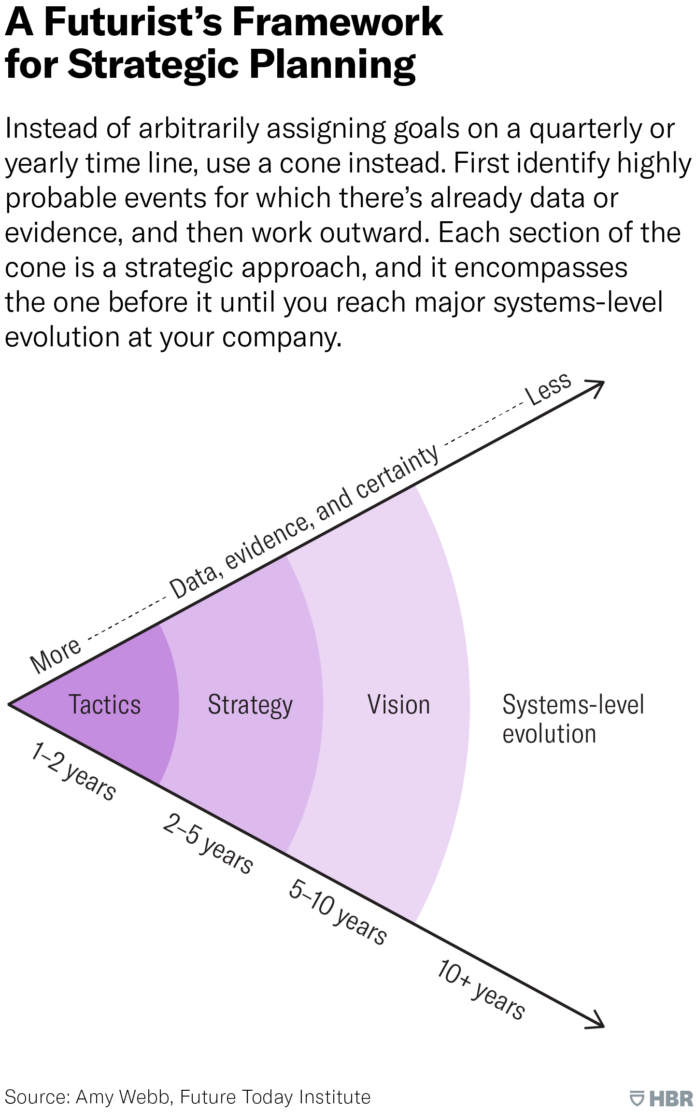Article Excerpt:
Chief strategy officers and those responsible for shaping the direction of their organizations are often asked to facilitate “visioning” meetings. This helps teams brainstorm ideas, but it isn’t a substitute for critical thinking about the future. Neither are the one-, three-, or five-year strategic plans that have become a staple within most organizations, though they are useful for addressing short-term operational goals. Futurists think about time differently, and company strategists could learn from their approach. For any given uncertainty about the future — whether that’s risk, opportunity, or growth — we tend to think in the short- and long-term simultaneously. To do this, consider using a framework that doesn’t rely on linear timelines or simply mark the passage of time as quarters or years. Instead, use a time cone that measures certainty and charts actions.
Dozens of organizations around the world use the time horizons cone in the face of deep uncertainty. Because their leaders are thinking exponentially and taking ongoing incremental actions, they are in position to shape their futures. It might go against your biological wiring, but give yourself and your team the opportunity to think about the short- and long-term simultaneously. Resist the urge to pick a year ending in a 0 or 5 to start your strategic planning process. You will undoubtedly find that your organization becomes more resilient in the wake of ongoing disruption.
Analysis:
If we begin to think about time like a futurist would, then we can develop plans and make decisions that consider the long term implications rather than short term success. While many businesses may host “visioning” meetings to facilitate this future-forward thinking and planning, this futurist way of thinking should be a constant. The idea of organizing plans within a “cone” can measure certainties and charts actions, whereas the more traditional forms of planning on a linear timeline which can only function within the foreseeable futures (short term). This futuristic way of thinking can and should be applied when considering potentials for future mass casualty events.




